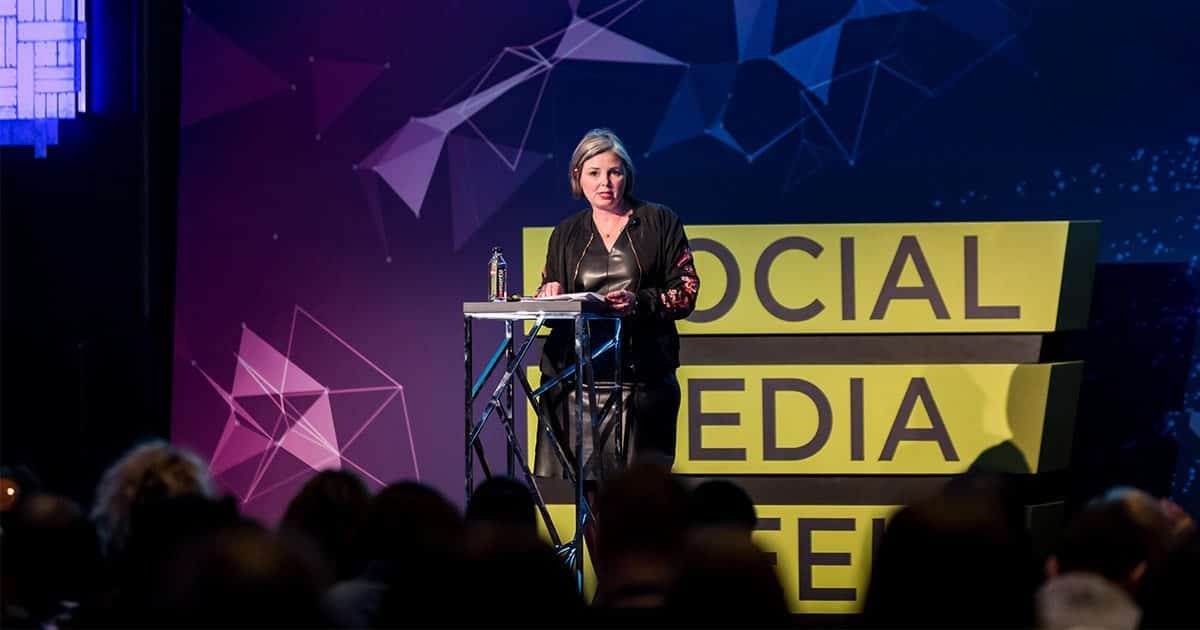Gen Z (aka those born between 1995-2014) comprises 25% of the US population, and will account for 40% of all consumers by 2020. It is the largest and most ethnically diverse generation in history and currently represents around $143 billion in buying power (without factoring in influence on household spending).
Gen Z has never known a world without the internet – 90% of them use a mobile device to get online every day, and they can spend up to 9 hours a day in front of a screen (not including school screens).
As the first truly mobile-first generation, these digital natives have a unique perspective and approach when responding to marketing messages. Always aware of alternative options (which has led some to call them ‘GenExit’), Gen Z tends to treat brand messaging with a healthy dose of skepticism.
So, how can marketers gain their trust?
Kate Lewis, SVP and Editorial Director of Hearst Magazines Digital Media, recently shared her observations on the digital habits of Gen Z at SMWNYC, and her recommendations for incorporating post-millennial values into business objectives.
Gen Z’s values
Gen Z’s experiences growing up during political and economic uncertainty have resulted in more pragmatic and conservative behaviors. They are unlikely to make uninformed and impulsive purchasing decisions.
Compared to Millennials, they are less interested in owning material possessions like cars, music, magazines, books, and clothes – and what they do own, they tend not to get online.
They are also more fluid about gender and race, with 48% identifying as exclusively heterosexual (down from 65% amongst Millennials). Their keen awareness of social justice issues also flows through to their brand and advertising preferences. They care about integrity, authenticity, and prefer to see real people instead of models in advertising campaigns.
Gen Z’s digital habits
Gen Z is tech-savvy, highly informed, inclusive, and places a strong emphasis on personalization and relevance. They have a unique ability to quickly assess and filter large amounts of information to determine if something is worth their time, and are natural skeptics who are hyper-aware of being sold to.
This means brands must find innovative ways to deliver engaging and beneficial content, or risk being filtered out. If a brand captures their attention, Gen Z will actively share their opinions, collaborate and co-create with them.
Gen Z prefers platforms that demand creativity but also cater to their risk-averse nature (such as Instagram and Snapchat, which offer a closed feed and ephemeral posts). They want strict control over who has access to their posts.
They also expect to be in charge of their viewing schedule, and content is mostly consumed on their phones. Streaming platforms like Netflix and the channel subscription model of YouTube strongly appeal to Gen Z.
Advice on connecting with Gen Z
Lewis recommends marketers focus on mobile. “Gen Z was practically born with a phone in their hand, so the #1 way to communicate with them is through chat (text, direct messages, web chat).” They are so connected, that “40% of Gen Z feel working WiFi is more important than working bathrooms.”
Multimedia short-form storytelling is currently their preferred style of content. Passive one-way messaging is unlikely to resonate with them. “Gen Z prefers a mashup of video, words, and sound that entices them to read further”, advised Lewis. In her experience, a swipeable video gives them the level of control they desire, and much like flicking through a magazine, the visuals are often more important than the captions. Gen Z may also understand “likes” and “shares” more than actual facial expressions.
Snapchat, Instagram , and YouTube are currently the best places to reach Gen Z. Studies show that 83% of 12-17 year olds in the US use Snapchat, and Gen Z spends twice as much time on Snapchat than Millennials do. In terms of video time, teens are spending:
- 34% watching YouTube,
- 27% watching Netflix, and
- 14% watching live TV.
YouTube is trending more than the other social platforms because Gen Z is more attracted to, and heavily influenced by, content showing real people. Interestingly, YouTube is also where Gen Z are now searching for most of their information. The top YouTube searches are currently music, Minecraft, movies, and funny stuff, but ‘How To’ searches have grown by 70% in the last year too.
Voice searching and voice-commerce are also on the rise – 20% of searches are now conducted through voice, and 50% of all voice commands are issued through phones. In 2017, voice commerce grew to $1.8 billion, and it is expected to grow to $40 billion in 2022. Amazon’s recent debut of a new Echo Dot Kids Edition reinforces this is a growing trend.
Marketers need to meet Gen Z where they are, or risk being filtered into obscurity. The best marketing approaches to date have involved a combination of mobile, chat, hybrid content/video formats, and voice-activated devices.
Learn the latest trends, insights and best practices from the brightest minds in media and technology. Sign up for SMW Insider to watch full-length sessions from official Social Media Week conferences live and on-demand.
The post Why Marketers Need To Adapt To Forge Deeper Connections With Gen Z appeared first on Social Media Week.
Source
https://socialmediaweek.org/blog/2018/04/why-marketers-need-to-adapt-to-forge-deeper-connections-with-gen-z/


